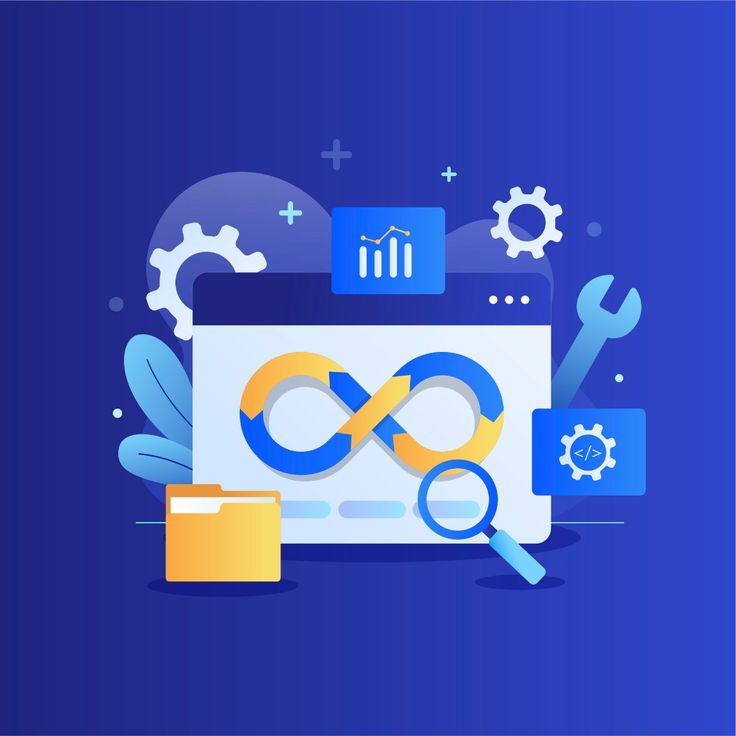Mastering DevOps: A Comprehensive Beginner's Guide
 jinal patel
jinal patelTable of contents

Introduction
This is how I navigate my journey in the field of DevOps. For individuals with a background in computer science, the transition into DevOps can be more seamless and intuitive. This is because they already possess a foundational understanding of programming, systems architecture, and software development processes, which are crucial in DevOps. To embark on a successful DevOps journey, it is essential to be aware of certain prerequisites and to follow a structured roadmap that covers the core aspects of DevOps. These prerequisites include a solid grasp of programming languages, familiarity with version control systems, and an understanding of continuous integration and continuous deployment (CI/CD) pipelines. Additionally, knowledge of cloud platforms, containerization, and orchestration tools is highly beneficial. By following this comprehensive DevOps roadmap, you can effectively build the skills and knowledge necessary to thrive in this dynamic and evolving field.
DevOps Pre-requisites roadmap
Operating System
Understanding operating systems is crucial for anyone looking to excel in DevOps. You should be familiar with both Windows and Ubuntu (or any Linux distribution), as these are commonly used in various environments. Here are some key areas to focus on:
File System
Memory/Storage
I/O Management
Process Management
Threads and Concurrency
Virtualization
GitOps
Introduction to Git , Source Control
GitHub and other version control systems
Git Operations and branching techniques
Git Advanced Features : Stash , Cherrypick , Rebase , Bisect
Git Remote Operations : Fetch , Pull , Push and Pull Requests
Programing Language
Learn the basics of the programming language, including data types, variables, control structures, functions, and error handling.
Aim to create a program that shows intermediate-level skills, focusing on writing, building, and deploying the application.
Focus on compiling and building applications from source code using tools like
gccandmake.Practice with at least one compiled language (e.g., C or C++) and one interpreted language (e.g., Python or JavaScript) to understand different programming paradigms and build processes.
Shell Scripting
Bash scripting
Structure of Bash
Functions
Variables
Loops
Conditional Statements
By understanding these core components, you will be able to write efficient and effective Bash scripts to automate tasks and manage system operations.
Text manipulation
AWK, sed, grep, sort
uniq, cat, cut, paste, wc, etc.
Database
NoSQL
MongoDB
MongoDB is a popular NoSQL database known for its flexibility and scalability. It stores data in a JSON-like format and doesn't need a predefined schema, allowing easy changes. This is useful for handling large or changing data. MongoDB supports powerful querying and indexing, making it efficient for data management. It's widely used in web apps, real-time analytics, and big data processing due to its ability to scale across servers.
Cassandra
Apache Cassandra is a strong NoSQL database for handling large data across many servers, ensuring high availability without a single point of failure. It's ideal for fast, reliable data access in social media, IoT, and financial services. Its peer-to-peer architecture and column-family data model offer fault tolerance, scalability, and efficient data handling, making it perfect for high-throughput applications with minimal downtime.
SQL
MySQL/MariaDB/PostgreSQL
These are popular relational database management systems (RDBMS) known for reliability and community support. MySQL and MariaDB are fast and user-friendly, ideal for web apps and small projects. PostgreSQL offers advanced features for complex, large-scale applications.
The main goal is to understand basic database concepts, including data storage, retrieval, indexing, and relational database principles.
The secondary goal is to learn how database administrators automate tasks in 2023, using tools for backups, performance monitoring, and scaling to ensure efficient operations.
Networking
OSI Model
DNS (Domain Name System)
HTTP and HTTPS
FTP and SSL/TLS
Network Tools:
Nmap
tcpdump
ping
mtr (My Traceroute)
traceroute
airman
dig (Domain Information Groper)
iptables
Process Monitoring:
ps
top
atop
lsof (List Open Files)
How to setup
Reverse Proxy
Forward Proxy
Load Balancer
Firewall
How to deploy an application into a web server
IIS (Internet Information Services)
Nginx
Tomcat
Apache
In the DevOps roadmap, we will focus on automating the deployment process for these web servers. This automation will streamline the deployment pipeline, reduce manual errors, and ensure consistent and reliable application delivery. By integrating continuous integration and continuous deployment (CI/CD) practices, we will enhance the efficiency and speed of deploying applications into these web server environments.
Theory of DevOps
Continuous Integration (CI)
Continuous Deployment (CD)
The Infinity Loop
The Evolution of DevOps
What Are the Top Companies Doing?
DevOps Core roadmap
Practical DevOps
Periodic Table of Tools
Reference Architectures
What Does “Good DevOps” Look Like?
DevOps Culture - What Is It?
CI/CD
Jenkins / CircleCI / GitLab
Automate the Manual Tasks You Learned in the Prerequisites
Do This on Windows and Linux OS's
Cloud
One Cloud: AWS / Azure / GCP
Why Cloud?
Creating VMs
Networking
Installing Software in the VM
Common Cloud Services
Connect from Command Line
Continuous Testing
One popular functional testing tool is Selenium. It lets developers automate web browser interactions to ensure applications work correctly on different browsers and platforms. Selenium supports various programming languages, making it a versatile choice for many teams.
Creating simple test cases in a CI/CD pipeline involves writing automated tests to check basic application functions. These tests ensure new code changes don't break existing features, maintaining software quality and reliability.
A commonly used performance testing tool is Apache JMeter. It tests web application performance and scalability by simulating multiple users. JMeter helps identify bottlenecks and optimize performance.
For mobile testing, Appium is a popular tool for automated testing on Android and iOS. It supports multiple programming languages, enabling reusable tests across devices and operating systems.
In DevOps, new testing types have emerged, like chaos engineering to test system resilience, and infrastructure as code testing for secure configurations. Security testing is also crucial for finding vulnerabilities and ensuring compliance.
Container ecosystem
Docker Basics
Kubernetes (K8s) Overview
YAML Introduction
Pods, Replica Sets, Deployments, etc.
Microservices Architecture
Infrastructure-as-cod
Concept of Infrastructure as Code (IaC)
How Does IaC Tie into the DevOps Cycle?
Ansible and Terraform: Why Do We Need Both?
Implement IaC for the CI/CD Pipeline Created
Monitoring & Logging
Prometheus
Grafana
ELK Stack
Graylog
This article outlines a comprehensive DevOps roadmap, starting with essential prerequisites like operating system fundamentals, programming languages, and shell scripting. It covers key topics such as GitOps, database management with SQL and NoSQL, networking concepts, and process monitoring tools. The guide delves into setting up reverse proxies, deploying applications on web servers, and understanding core DevOps practices like continuous integration and deployment. It also highlights cloud computing basics, continuous testing tools, the container ecosystem with Docker and Kubernetes, and infrastructure as code concepts. Lastly, it emphasizes the importance of monitoring and logging with tools like Prometheus, Grafana, and the ELK Stack to ensure effective DevOps implementation.
Subscribe to my newsletter
Read articles from jinal patel directly inside your inbox. Subscribe to the newsletter, and don't miss out.
Written by

jinal patel
jinal patel
I am a results-driven Software Engineer with expertise in C# and ASP.NET Core, passionate about developing efficient backend solutions and RESTful services that boost application performance. At TatvaSoft, I led cross-functional teams using agile methodologies, improving project delivery by 30% and reducing bug reports by 35% through clean code and Git version control. I have a strong foundation in web development (ASP.NET Core, React, HTML, CSS, JavaScript) and database management (MS SQL, PostgreSQL, GraphQL). My work has optimized system performance, reducing website downtime by 40% and enhancing overall efficiency by 20%. Currently a Graduate Certificate in Mobile Solutions Development, I’m proficient in continuous integration, cloud services (Azure), and performance optimization. I’m eager to contribute to innovative projects that drive software excellence. Let’s connect to explore collaboration opportunities!